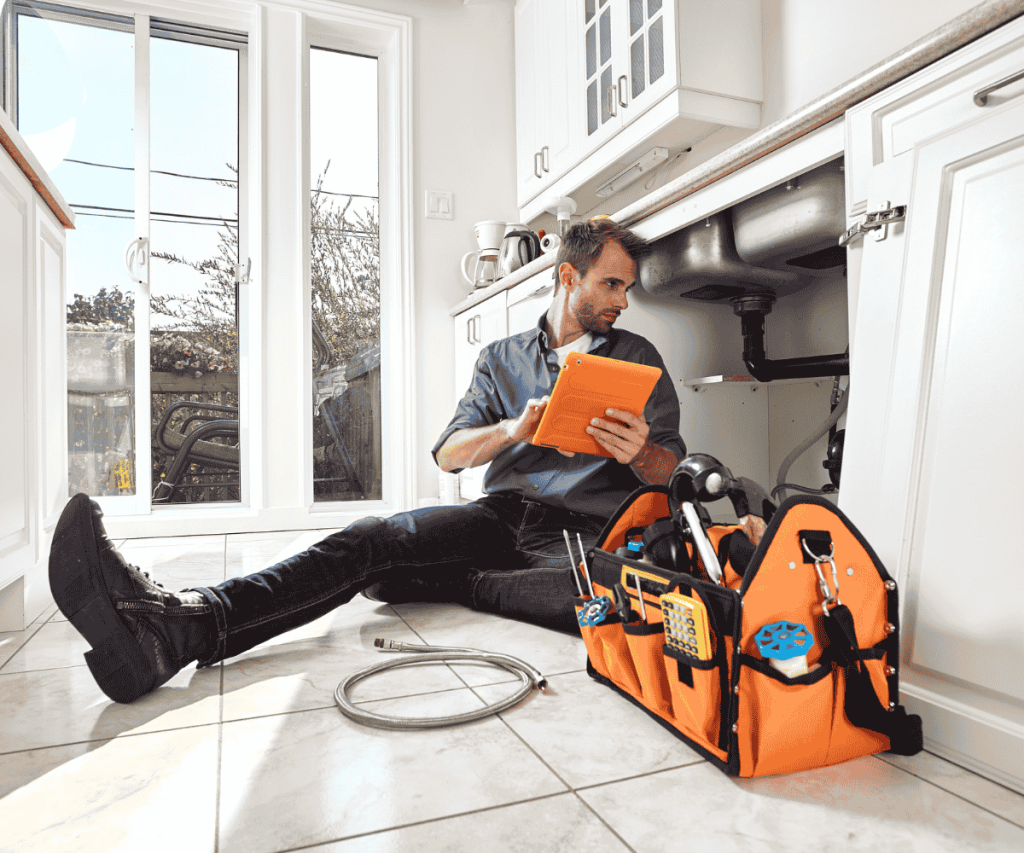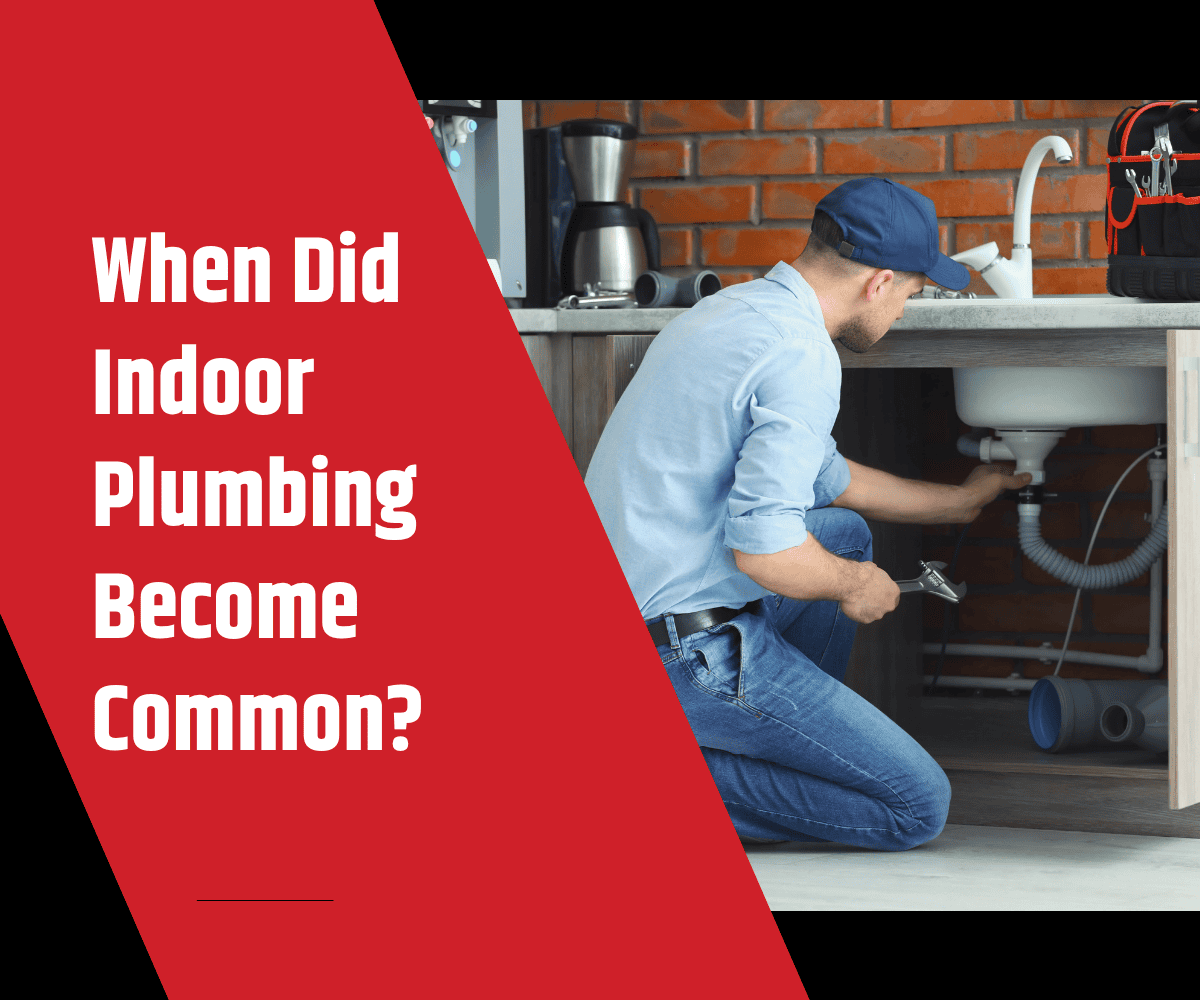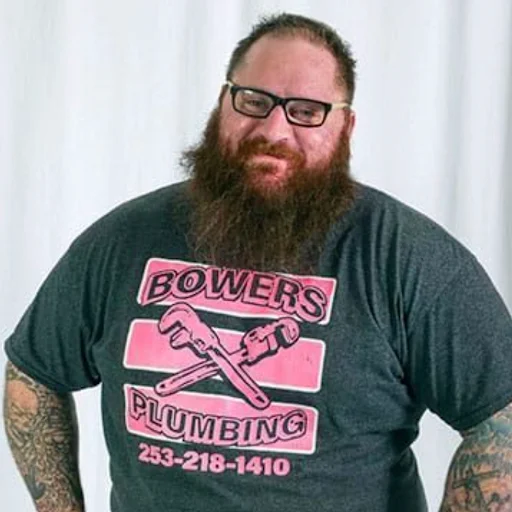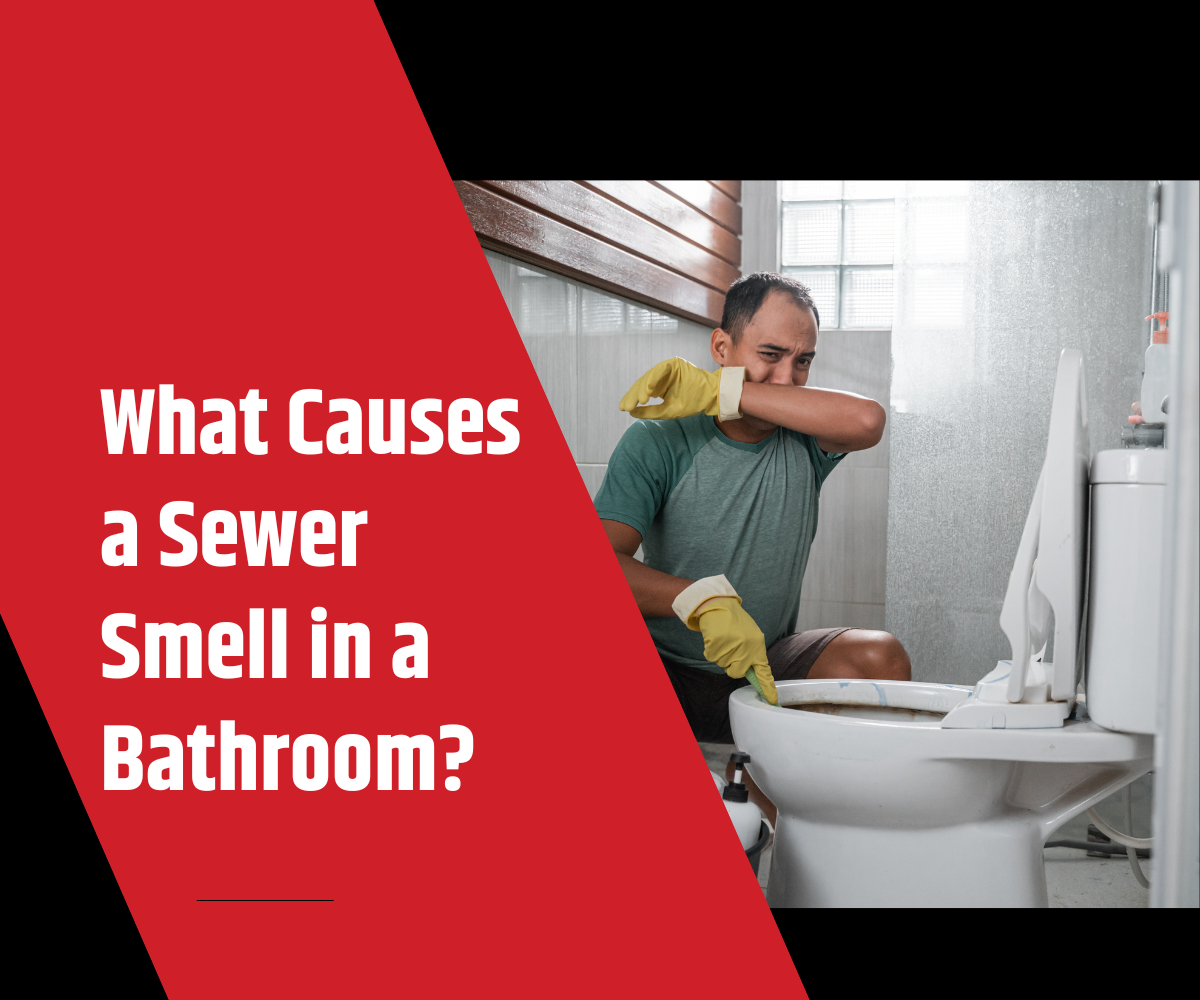When Did Indoor Plumbing Become Common? Milestones That Changed Homes Forever!
Indoor plumbing is so deeply woven into modern life that it’s easy to forget there was ever a time without it. Running water, flushing toilets, and warm showers are daily comforts—but they weren’t always the norm. So, when did indoor plumbing become common? The answer tells a story of innovation, public health, and home evolution. Understanding that journey helps us appreciate—and protect—the systems that support our homes today.
Ancient Origins: Early Plumbing Systems Around the World
Thousands of years before copper pipes and modern valves, ancient civilizations had impressive plumbing systems:
- Civilization: Mesopotamia & the Indus Valley used clay pipes and stone drainage as early as 4000 BCE
- Innovation: Ancient Egypt had copper piping and bathrooms in palaces
- Infrastructure: Rome built vast aqueducts, public baths, and sewer networks
These systems were functional and innovative but served only elites or city centers. Still, they prove humans have long pursued comfort and sanitation. Long before indoor bathrooms became standard, ancient people sought ways to move water through basic plumbing infrastructure.
The Long Dry Spell: Medieval Decline of Plumbing Technology
After the fall of the Roman Empire, Europe lost much of its plumbing innovation:
- Practices: Cities reverted to outhouses, chamber pots, and public water wells
- Hazards: Waste was dumped in the streets, spreading disease rapidly
- Lifestyle: Bathing became infrequent, and clean water access diminished
This period saw centuries without practical indoor plumbing, especially for common people, reinforcing the gap between early advancement and societal regression. Asking when did indoor plumbing become common underscores how rare it was for the average household to enjoy running water during this time.
In the Middle Ages, many homes relied on shared privies, cesspits, and water carriers who fetched water from nearby streams or wells. Disease outbreaks like the Black Plague were directly tied to poor sanitation practices, prompting rudimentary attempts at waste management—but nothing resembling indoor plumbing or structured plumbing infrastructure.
The Spark of Innovation: Plumbing in the 18th & 19th Centuries
With industrialization came renewed interest in improving sanitation and hygiene:
- Public Works: Cities began constructing public waterworks to support growing populations
- Technology: Lead and cast iron pipes were introduced in wealthier homes
- Milestone: In 1829, Boston’s Tremont Hotel featured indoor plumbing, a rare luxury at the time
- Advancement: The flush toilet saw mechanical and design innovations, gradually replacing chamber pots
Although promising, these advancements were largely limited to upper-class households and commercial properties. The question of when did indoor plumbing become common still had no clear answer at this stage, as adoption was far from widespread.
In London, the 1858 “Great Stink” forced Parliament to act, leading to the construction of a vast underground sewer system that would later inspire American cities. New York and Chicago began to develop sewage infrastructure, often prioritizing public buildings and hotels. These developments laid a stronger foundation for organized sewage systems and healthier urban communities.
Plumbing Becomes Accessible: 1900s to Post-War America
The 20th century marked real progress in making plumbing available to more households:
- Conditions: In the early 1900s, millions of homes still relied on outhouses or wells
- Challenges: Rural communities faced infrastructure delays due to isolation and cost
- Initiatives: The New Deal era pushed infrastructure projects, introducing plumbing in rural and low-income homes
- Growth: After World War II, a housing boom accelerated indoor plumbing adoption with new suburban developments
- Materials: Modern piping materials like galvanized steel and copper became the norm
By 1937, the Rural Electrification Act also helped bring running water and plumbing to remote areas as utility companies expanded. By the late 1950s, the rise of middle-class homeownership and consumer demand for modern bathrooms brought full plumbing into everyday life. Many households began to enjoy access to indoor bathrooms, heating systems, and centralized water supply. This era is when indoor plumbing began to shift from a luxury to a standard feature in homes.
When Did Indoor Plumbing Become Common in the U.S.?
Key milestones reveal the timeline and finally answer the question: when did indoor plumbing become common?
- 1940: Only 55% of American homes had complete plumbing
- 1950s–1960s: Plumbing became standard in new home construction
- 1990s: Nearly universal access across the U.S.
- Today: Fewer than 1% of homes lack indoor plumbing, according to U.S. Housing Surveys
The modern household came to include not just one bathroom but often two or more, complete with running hot water, heating, sewage systems, and connected plumbing infrastructure. In the United States, this transition marked a major public health improvement.
By the 1960s, we could finally say with confidence that indoor plumbing had become common in American homes.
What “Common” Means Today: Expectations vs. Reality
Modern plumbing systems are expected to work seamlessly, but not all homes are created equal:
- Inequity: Some rural and indigenous communities still face plumbing inequality
- Aging Issues: Aging infrastructure in older homes may include corroded pipes and outdated systems
- Sustainability: Climate concerns and sustainability have pushed innovation toward low-flow fixtures, greywater reuse, and smart plumbing systems
According to the U.S. Census Bureau, some homes—particularly in remote Alaska and Native reservations—still lack full plumbing access. In cities, outdated piping materials like galvanized steel and lead continue to pose health and safety risks.
Smart systems today allow homeowners to monitor water usage remotely, shut off valves during leaks, and reduce water waste, pointing toward a new era in plumbing innovation. A well-designed plumbing system now considers both user comfort and environmental impact. While we often ask when did indoor plumbing become common in the past, the new question is how we can modernize and make it more sustainable moving forward.
Indoor Plumbing & Roofing: The Hidden Connection
Many homeowners don’t realize their roof plays a vital role in indoor plumbing:
- Ventilation: Vent stacks extend through the roof to release gases and equalize pressure
- Moisture Risk: Poorly sealed roof penetrations can cause moisture leaks into attic spaces
- Drainage: Improper roof slope or guttering can redirect rainwater and affect drainage
Roof vents are critical to plumbing performance. If blocked or damaged, they can cause slow drains, gurgling sounds, or even sewer gas odors inside the home. Additionally, flashing around these vents must be properly installed to prevent roof leaks.
A dependable roof protects your plumbing system from excess moisture and air pressure issues, reinforcing the need for integrated home maintenance. The relationship between indoor plumbing and roofing isn’t often discussed, but it has been essential since indoor plumbing became common.
Signs of Plumbing-Related Roof Issues to Watch For
Even small roof defects can impact plumbing systems and vice versa. Watch out for:
- Discoloration: Ceiling stains or peeling paint in upper floors
- Mold Growth: Visible mold or mildew in attic corners
- Auditory Clues: Dripping sounds without visible leaks
- Pipe Shift: Vent pipe movement or rust where it exits the roof
Unusual humidity levels in bathrooms, bubbling paint, or odors in upper floors may be traced back to vent or drainage issues routed through the roof. These signs may point to underlying damage that requires prompt service and maintenance.
Homeowners who understand how indoor plumbing became common and how it connects to other systems like roofing are better equipped to protect their property.
What Modern Homeowners Can Learn from History
The historical development of plumbing is more than just trivia—it highlights the importance of proactive maintenance and home upgrades:
- Routine Checks: Plumbing isn’t a one-time install—it requires updates, repairs, and inspections
- Roof Care: Roof maintenance supports proper drainage and prevents moisture infiltration
- Value: Investing in quality systems means fewer emergencies, better water efficiency, and long-term property value
Proper planning in modern construction or remodeling ensures your plumbing and roofing systems function as a coordinated unit, not in isolation. Maintaining both systems together supports household health and ensures compliance with public health standards.
History teaches us that while asking when did indoor plumbing become common may seem like a distant reflection, the responsibility of keeping it functional lies with every homeowner today.
How Bowers Plumbing & Remodel Supports Modern Homes
At Bowers Plumbing & Remodel, we understand how vital your plumbing and roofing systems are—not just as standalone elements, but as interconnected protectors of your home.
We proudly serve Puyallup and surrounding areas with:
- Installations: Residential and commercial plumbing installations, upgrades, and maintenance
- Upgrades: Remodeling services that modernize outdated plumbing for efficiency and safety
- Detection: Leak detection and water conservation solutions
- Prevention: Vent stack sealing, roof flashing repair, and water mitigation support
Our team works with care, precision, and a deep respect for the history and future of home systems. Whether your home was built in the 1950s or just last year, we ensure your plumbing performs the way it should.

Contact Bowers Plumbing & Remodel
Bowers Plumbing & Remodel is a family-owned company proudly serving Puyallup, Tacoma, Bonney Lake, Auburn, Gig Harbor, Olympia, and surrounding areas across Pierce, King, and Thurston Counties since 2010.
We specialize in residential plumbing, remodeling, and water system maintenance with a reputation for responsiveness, honesty, and top-quality work. Our team is fully licensed, bonded, and insured.
Call us at (253) 525-8473 for a free consultation, emergency service, or to discuss how we can help modernize your plumbing system. Whether you’re upgrading fixtures, handling a leak, or remodeling an entire bathroom, we bring dependable service and deep expertise to every job.
Areas We Serve: Puyallup, Tacoma, Bonney Lake, Lakewood, Graham, South Hill, Sumner, University Place, Seattle, Kent, Renton, Olympia, and more.





